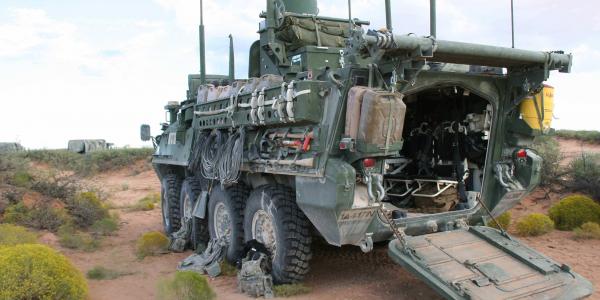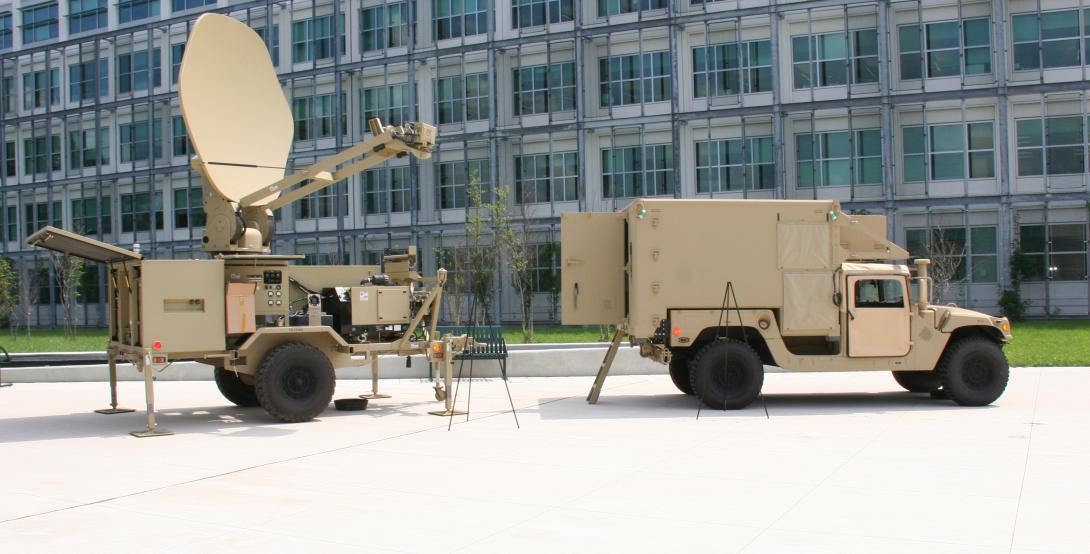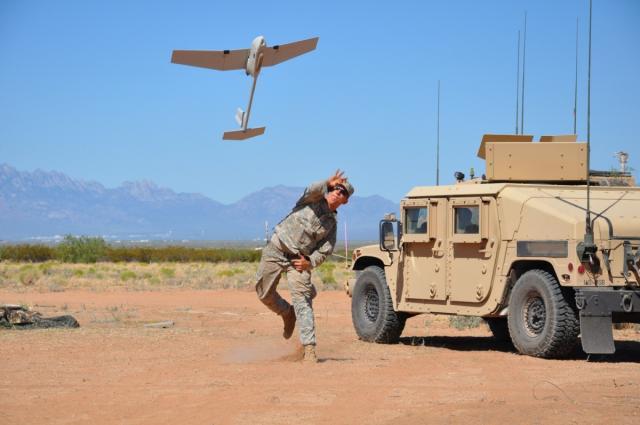Signaling for More Spectrum
In decades past, designers assumed there always would be plenty of spectrum to go around and built their systems accordingly. Strategists and tacticians did the same when crafting operational plans. Availability, the potential for interference and the need to defend against an attack were considerations but not driving factors.
Those days are over. The electromagnetic spectrum (EMS) is the most crowded, sought-after and highly contested real estate in the operational arena. Nearly every action the U.S. military takes is predicated on dependable access to the EMS. Commanders and units rely on voice communications, video, data transmission, targeting and intelligence, surveillance and reconnaissance, which all occur via the EMS.
Over the past two decades, the Army’s demand for spectrum has increased exponentially. To complicate matters, today’s operating environment is the most challenging and diverse the Army has ever known. Though primarily based in the continental United States, the Army is expected to respond rapidly to threats and to participate in humanitarian or disaster relief anywhere on the globe. Current and future adversaries range from classic nation-states to loosely knit, relatively small groups that meld into civilian populations—with unprecedented access to capabilities and technologies once reserved for the most developed, professional militaries.
The U.S. Army Network Campaign Plan (ANCP) 2020 and Beyond lays the foundation for the networks that will support the Army Operating Concept to globally “respond to and resolve crises, defeat enemies, establish security and consolidate gains.” To back this expeditionary concept, the Army will require access to spectrum whenever and wherever it deploys to effectively support commanders’ courses of action. The Army also will need the ability to conduct agile and effective EMS operations globally to safeguard the robust networks that underpin the modern battlefield’s command and control systems.
To become the fully ready, expeditionary force combatant commanders need, the Army is re-examining how it uses, manages and protects the EMS. At the most fundamental level, it must be able to conduct EMS operations quickly and capably at home and abroad and for both training and mission purposes. In the congested and complex electromagnetic environment, that means being able to assess and monitor EMS in near real time and using spectrum-dependent systems that are flexible and adaptable. The Army also must know in advance how any new technologies added to the battlespace will affect the EMS.
The service is tackling these challenges from multiple angles. To help make spectrum use more efficient and create seamless data exchange, it is transitioning from legacy spectrum management data standards and databases to the Defense Department’s Standard Spectrum Resource Format (SSRF). Standardized data are critical to supporting near real-time EMS operations, which link seemingly fragmented warfighting functions, such as intelligence, electronic warfare, signal and cyber operations, in a cohesive and unified effort. Adopting this format will make the Army’s EMS data discoverable, searchable, interoperable and accurate—and, therefore, relevant—across the Army and the Defense Department.
The Army already has converted more than 15,000 data items from legacy formats to the SSRF, which prescribes the mechanism by which the Defense Department’s spectrum management systems exchange data today and in the future. To further support joint EMS operations, the Army is developing the Electronic Warfare Planning and Management Tool (EWPMT), which provides the software necessary to integrate key databases containing friendly, enemy and nonaligned emitter data. The EWPMT uses the SSRF to generate, import, export and modify force structure information, radio frequency emitter data and characteristics, frequency assignments and power. The tool will create a holistic picture of friendly emitter and sensor patterns as well as the location of interference, disruption and degradation. It also will employ EMS operations toolsets to model and simulate planned electronic attack operations.
By properly formatting and exchanging data, deconfliction of the electromagnetic operational environment can be automated. Deconfliction is critical to prevent degradation of friendly communications capabilities so crucial to maintaining an operationally responsive force able to react to crises anytime, anywhere on the globe.
The Army also must have the capability to accurately predict and assess the spectral environment, on a near real-time basis, to identify and mitigate potential sources of harmful interference that threaten to diminish network effectiveness. Spectrum managers must quickly and accurately simulate, based on collected near real-time data, the potential effects of spectrum-dependent systems on one another. Such simulations enable assessment of a commander’s course of action from an EMS operations perspective.
Of course, EMS is not only a natural resource to be exploited but also a maneuver space in which to operate. Identifying EMS interference in near real time helps spectrum managers rapidly deconflict the electromagnetic operational environment. The Army is developing planning and management capabilities that support this type of activity.
On the materiel side, the Army must develop and buy emerging technologies that foster efficient spectrum access and use, and it must address scarcity and deployment difficulty. Scarcity refers to the fact that spectrum must be allocated among those who need it. Presently, each new capability is developed to fit within predetermined subdivisions of the EMS, but this method of frequency allocation is inefficient and does not safeguard spectrum. Deployment difficulty refers to the pigeonholing of systems to particular frequencies. It too lacks flexibility, is not conducive to spectrum reuse and results in the overconsumption of certain blocks of spectrum.
To help speed up the development of solutions to these issues, the Army has turned to the Defense Department Chief Information Officer Spectrum Access Research and Development Program, a $500 million effort that draws upon the expertise of the military, academia and industry to create innovative technologies that enable spectrum sharing and reduce the department’s overall spectrum footprint. Army-specific research and development efforts focus on EMS efficiency, flexibility and adaptability to improve access; EMS agility to allow for spectrum sharing with the commercial sector and dynamic movement to available spectrum bands; and EMS resilience to continue operations even in congested and contested spectrum environments.
Dynamic spectrum access (DSA) technology addresses spectrum management processes that no longer are flexible or adaptive enough to accommodate growing network mission demands. The DSA technology employs real-time adaptation of a radio’s electromagnetic operational environment behavior and physical layer characteristics, according to criteria such as current spectrum usage, availability and user requirements. In doing so, it maximizes spectrum capacity, allowing more spectrum-dependent technologies to use this limited resource at the same time. The Army is assessing how to integrate the DSA technology into its architecture. Key attributes under evaluation include radio situational awareness, interference avoidance, spectrum data management and advanced networking.
Undoubtedly, high demand for spectrum leads to a congested electromagnetic environment. To resolve the virtual traffic jam, the Army seeks to exploit technological advances to access less-used spectrum and to apply commercial services and technologies to meet Defense Department requirements. One potential solution is to give systems the ability to move between frequency bands, depending upon availability, and share spectrum more readily without creating interference for users. For example, the Army is assessing the possibility of incorporating adaptive spectrum utilization techniques into the next generation of radios. Known as cognitive radios, these systems use unoccupied spectrum to establish a network, then continue to operate on newly discovered spectrum until they are superseded by the primary user or the band becomes saturated.
Reliable access to an amount of spectrum adequate enough to handle all Army and joint force needs, which continue to grow rapidly, will remain a significant challenge for the foreseeable future. That means the search for better spectrum-related tools, processes and technologies will continue. The Army, in partnership with the Defense Department, will keep exploring new avenues to improve spectrum management and defense.
At the same time, the Army needs industry to factor spectrum use and operations into every materiel decision. It is looking for innovations large and small that decrease spectrum requirements; incorporate frequency-sharing and frequency-hopping capabilities into more systems; make the basic network architecture more flexible, adaptive and resilient; and prevent both unintentional and malicious interference. And those are just the known possibilities. The Army is open to more radical, paradigm-shifting ideas. With concerted, combined effort between government and industry, spectrum’s impact as a limiting factor and vulnerability can be minimized and maybe even erased.
Richard DeSalvo is the director of the U.S. Army’s Spectrum Management Office. The views expressed are his alone and do not necessarily reflect the views of the U.S. Army or the U.S. government.







Comments